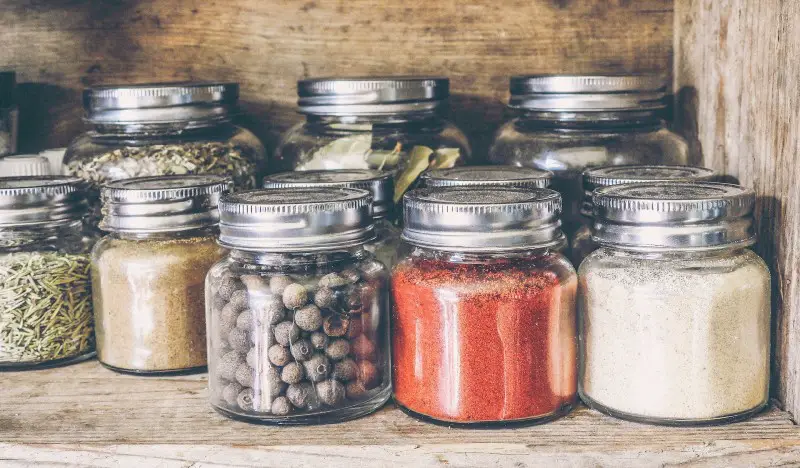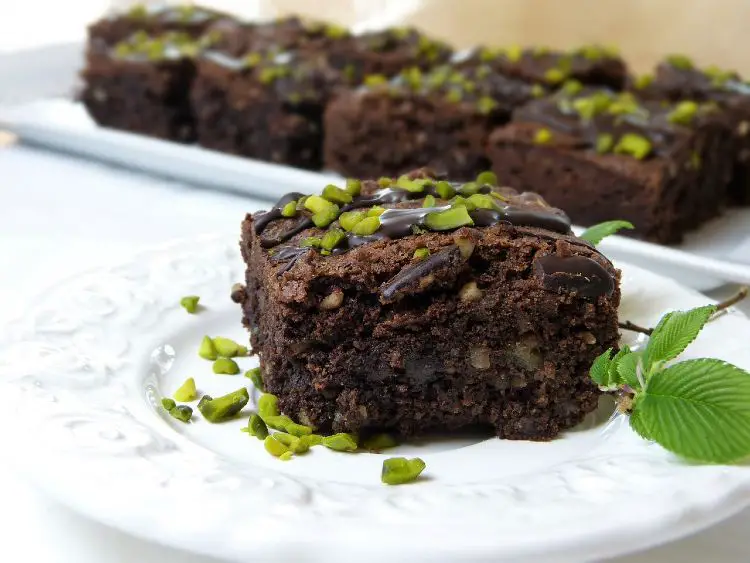Seasoning with a Twist: Ditching Celery Salt for Unique Substitutes
Celery salt: two simple words that combine to create a unique and flavorful seasoning used in an array of culinary creations. Whether it’s the finishing touch on a Chicago-style hot dog, an essential element in your Bloody Mary, or a flavor booster for your soups and stews, celery salt brings a particular taste and aroma that’s hard to replace.
But what happens when you reach for that jar in your spice rack and find it empty? Or what if you’re following a low-sodium diet? Thankfully, there are various substitutes available to save the day-and your dish.
Celery Salt Substitutes: A Comprehensive List
Herbs and Seeds
If you prefer a more natural, unprocessed approach, turning to herbs and seeds as substitutes for celery salt could be your best bet. These options often retain the earthy, peppery notes found in celery salt and can easily be added to recipes.
1. Celery Seeds
The most straightforward substitute for celery salt would be celery seeds, especially if you are trying to replicate the flavor as closely as possible. However, since you’re missing the ‘salt’ aspect, you might need to add salt separately to the dish.
Suitable For
- Soups and stews
- Meat rubs
- Salad dressings
2. Dill Seeds
Dill seeds can add a somewhat similar bitter and astringent note to recipes. They won’t perfectly mimic the taste of celery salt but can be a good fit in pickles, soups, and stews. You will also need to add salt to the dish separately when using dill seeds.
Suitable For
- Pickling
- Fish dishes
- Bread recipes
Note on Ratios
- For celery seeds, start with half the amount of celery salt required and adjust according to your taste. Don’t forget to add salt separately.
- Celery leaves can be used generously as they have a milder flavor. Finely chop them and add until you achieve the desired taste.
- Dill seeds are potent; use sparingly and adjust to taste. Again, you’ll need to add salt separately.
Fresh Produce Alternatives
Sometimes, fresh ingredients can offer a surprising but delightful twist as substitutes for a spice blend like celery salt. While the fresh produce won’t be an exact match, they can still infuse your dishes with a similar zest and aroma.
1. Fresh Celery
The closest fresh substitute for celery salt is, unsurprisingly, fresh celery. Chopped or grated into your dish, it can provide both texture and a mild celery flavor. Add salt separately to maintain the seasoning balance in your recipe.
Suitable For
- Salads
- Soups and stews
- Stir-frys
2. Cucumber with Salt
If you’re trying to capture the refreshing note in celery salt, thinly sliced cucumber seasoned with salt can offer a similar sensation. This combo is especially useful in cold dishes like salads.
Suitable For
- Fresh salads
- Sandwiches
- Cold pasta dishes
3. Fennel Bulb or Fennel Seeds
Fennel offers a slightly sweet, anise-like flavor that can bring depth to a dish, much like celery salt. It can be used in spice rubs and bread, while fresh fennel bulb is excellent in salads and roasts.
Suitable For
- Spice rubs
- Roasted meats
- Mediterranean dishes
4. Carrot Greens with Salt
An often-overlooked part of the carrot, the greens can be finely chopped and mixed with salt to create a celery salt alternative. They offer a mild, herbaceous flavor and can be an excellent addition to a variety of dishes.
Suitable For
- Garnishing
- Soups
- Fresh salads
Note on Ratios
- Fresh produce will add volume and moisture to your dish, so use sparingly at first and adjust as needed.
- Always remember to add salt separately when using fresh produce to mimic celery salt. The amount will depend on the dish and your taste preferences.
Specialized Seasoning Blends
In certain recipes, specialized seasoning blends can serve as an adequate substitute for celery salt. While they won’t perfectly emulate the flavor profile of celery salt, they do bring their own blend of spices that can complement a variety of dishes.
1. Poultry Seasoning
Poultry seasoning usually consists of sage, thyme, marjoram, rosemary, and sometimes even a touch of nutmeg. While it lacks the salty aspect of celery salt, it can still enrich your dish with a complex mix of flavors.
Suitable For
- Chicken and turkey dishes
- Stuffing
- Hearty soups and stews
Note on Ratios
Start by using half the amount of poultry seasoning as the celery salt called for in the recipe, adding salt separately to achieve the desired saltiness.
2. Italian Seasoning
Italian seasoning blends often combine herbs like oregano, basil, rosemary, and thyme. It can work as a substitute in recipes that are inherently Italian or can benefit from a Mediterranean touch.
Suitable For
- Pasta dishes
- Pizza
- Tomato-based sauces
Note on Ratios
Similar to poultry seasoning, begin with half the quantity of Italian seasoning compared to celery salt, adding salt separately. Adjust to taste.
3. Pickling Spice
If you’re looking to substitute celery salt in pickling recipes or brines, a pickling spice blend can be a great alternative. These blends usually include ingredients like mustard seeds, allspice, and sometimes even crushed red pepper and bay leaves.
Suitable For
- Pickles
- Brined meats
- Fermented foods
Note on Ratios
Use an equal amount of pickling spice as you would celery salt, but remember to add additional salt to mimic the original recipe’s saltiness.
Unique and Out-of-the-Box Substitutes
If you’re feeling adventurous or find yourself without any of the more conventional options, there are some unique and out-of-the-box substitutes for celery salt that can add an unexpected but delicious twist to your dishes.
1. Lemon Zest and Salt
For a burst of freshness combined with saltiness, consider using lemon zest mixed with salt. The zest brings a citrusy note that can be a refreshing change.
Suitable For
- Seafood dishes
- Summer salads
- Drinks like Margaritas
2. Nigella Seeds (Kalonji)
These black seeds offer a slightly bitter, onion-like flavor. When mixed with salt, they can serve as an exotic alternative to celery salt.
Suitable For
- Indian and Middle Eastern dishes
- Bread recipes
- Pickles
3. Garlic Salt
While not similar in flavor to celery salt, garlic salt can provide its own unique punch. If the dish can benefit from a garlicky flavor, this is an excellent substitute.
Suitable For
- Meat rubs
- Italian dishes
- Garlic bread
4. Nutritional Yeast and Salt
For a cheesy, umami flavor, try mixing nutritional yeast with salt. This is especially useful for those on a vegan diet.
Suitable For
- Vegan recipes
- Popcorn
- Pasta dishes
5. Szechuan Peppercorns and Salt
For those who enjoy a bit of spice, ground Szechuan peppercorns mixed with salt can add an exciting twist to your dish. The peppercorns have a unique, numbing effect that can be quite interesting.
Suitable For
- Asian dishes
- Stir-frys
- Marinades
Note on Ratios
- For most of these unique substitutes, a 1:1 ratio with celery salt is a good starting point.
- As always, it’s best to start with a smaller amount and adjust according to your taste and the needs of the recipe.
DIY Substitutes
If you find yourself in need of celery salt but prefer a homemade touch, consider making your own substitutes. This not only provides you with a ready replacement but also allows for personalization to suit your specific tastes.
1. Making Your Own Celery Salt
One of the most effective ways to substitute celery salt is to make it yourself. All you need are celery seeds and table salt, and you can create your own blend at home.
Ingredients
- 1 part celery seeds
- 2 parts table salt
Steps
- Using a mortar and pestle or a spice grinder, grind the celery seeds into a fine powder.
- Mix the ground celery seeds with table salt.
- Store in an airtight container.
Suitable For
- Any recipe that calls for celery salt
Note on Ratios
You can adjust the proportion of celery seeds to salt according to your preference.
2. Combining Table Salt with Dried Celery Flakes or Leaves
Another DIY approach involves using dried celery flakes or leaves. This gives you more control over the texture and can be an excellent way to utilize leftover celery.
Ingredients
- 1 part dried celery flakes or leaves
- 2 parts table salt
Steps
- If using fresh celery leaves, first dry them in an oven set at a low temperature or use a food dehydrator.
- Crush the dried celery flakes or leaves into a fine powder using a mortar and pestle or a spice grinder.
- Mix the ground celery flakes or leaves with table salt.
- Store in an airtight container.
Suitable For
- Any recipe that calls for celery salt, especially when a finer texture is desired
Note on Ratios
Feel free to adjust the ratio of dried celery to salt based on your specific needs and tastes.
General Spice Blends
When you’re out of celery salt and need a quick replacement, one of the first things you might consider is another spice blend that you already have in your pantry. While the taste may not be a perfect match, these general spice blends can often work in a pinch.
1. Old Bay Seasoning
This classic spice blend is a well-rounded mixture that includes celery salt as one of its primary ingredients. If your recipe can tolerate additional flavors like paprika, mustard, and red pepper, then Old Bay Seasoning can be a good alternative. Use it in the same proportion as you would celery salt.
Suitable For
- Seafood dishes
- Potato salads
- Bloody Marys
2. Mrs. Dash
For those looking to reduce their sodium intake, Mrs. Dash offers a blend of herbs and spices without any salt. While the flavor profile will differ, it can add complexity to your dishes in a way that’s somewhat similar to celery salt.
Suitable For
- Low-sodium diets
- Chicken and turkey rubs
- Vegetable dishes
3. Seasoned Salt
Another option is seasoned salt, a blend that usually contains table salt, herbs, and spices. The taste will be different from celery salt, but it can still bring a multifaceted flavor to your dish. Just be mindful of the other ingredients in your seasoned salt, as they will also influence the final taste of your recipe.
Suitable For
- General cooking
- Barbeque rubs
- Fries and chips
Note on Ratios
When substituting any of these general spice blends for celery salt, it’s essential to consider their potency and additional flavors. For a start, you can use them in a 1:1 ratio with celery salt, but always taste and adjust accordingly to match the dish’s needs.
Vegetable-Based Substitutes
For those looking to explore unique and unexpected substitutes, vegetables can offer intriguing alternatives that add depth and flavor to your dishes. Here are some vegetable-based substitutes for celery salt:
1. Finely Chopped or Powdered Leeks
Leeks possess a milder onion-like flavor that can provide a subtle savory note to your recipes. Finely chop leeks or process them into a powder to create a substitute that works well in soups, sauces, and casseroles. Begin with a small amount and gradually adjust to achieve the desired flavor.
2. Chopped Green Onions
Chopped green onions, also known as scallions, offer a fresh and slightly pungent flavor. They can be a fantastic addition to salads, rice dishes, and Asian-inspired recipes. Use chopped green onions in moderation as a substitute for celery salt.
3. Asafoetida (Hing) Powder
Asafoetida, a pungent spice commonly used in Indian cuisine, has a unique aroma that’s often described as reminiscent of garlic and onions. A small pinch of asafoetida powder can provide a strong umami flavor to various dishes. However, use it sparingly as it can be overpowering.
Other Types of Salts
When the unique flavor of celery salt is not critical, and your primary concern is the saltiness it contributes to a dish, you can look into using different types of salt as substitutes. Here are some to consider:
1. Table Salt
The most straightforward alternative would be plain table salt. Although it won’t bring the earthy, peppery flavors that celery salt offers, it will serve the basic purpose of seasoning your dish.
Suitable For
- General cooking
- Baking
- Seasoning snacks like popcorn
2. Sea Salt
Sea salt has a more complex flavor profile than table salt, owing to the trace minerals it contains. While not a direct substitute for celery salt, its nuanced taste can add a different layer of complexity to your dish.
Suitable For
- Grilled or roasted meats
- Seafood dishes
- Baked goods
3. Himalayan Pink Salt
This salt not only adds a pop of color but also contains various minerals that lend a more complex taste. However, it’s crucial to note that it does not provide the celery flavor, but will accomplish the saltiness required.
Suitable For
- Decorative finishing
- Fresh salads
- Cocktails like Margaritas
4. Kosher Salt
Kosher salt is another option that is often preferred for its pure, clean flavor and larger grain size. Like the other salts listed here, it won’t mimic the taste of celery but will serve the primary function of seasoning your dish.
Suitable For
- Brining meats
- Seasoning boiled water for pasta or vegetables
- Baking
Note on Ratios
When using other types of salt to replace celery salt, the ratio generally remains the same. However, since some salts like kosher salt and sea salt have larger grains, you may need to adjust the amount to get the level of saltiness you desire. Always taste as you go.
Frequently Asked Questions
In this section, we’ll address some of the most frequently asked questions regarding celery salt and its substitutes to clear up any uncertainties you may have.
1. Is celery salt healthier than table salt?
While celery salt does contain celery or celery seed, which has its own health benefits, it is still primarily salt. Therefore, it should be consumed in moderation just like table salt, especially for those watching their sodium intake.
2. Can I substitute celery salt with celery seed?
Yes, you can use celery seed as a substitute, but keep in mind that it will be more concentrated in flavor. You may need to adjust the amount and add some table salt to get closer to the taste of celery salt.
3. Is celery salt the same as celery seed?
No, celery salt is a mixture of ground celery seed and salt. Celery seed is simply the seed and doesn’t contain the salt component.
4. Can I use fresh celery as a substitute for celery salt?
Yes, you can use fresh celery, but the flavor and texture will be different, and you may need to adjust cooking times. Fresh celery is less concentrated, so you may need to use more to achieve the desired taste.
5. What is a sodium-free alternative to celery salt?
Dill weed, lemon zest, and nutritional yeast are all sodium-free options that can offer similar flavor profiles to celery salt.
6. Can I use celery salt in place of table salt?
Generally, you can, but keep in mind that celery salt brings its own unique flavor. The switch may alter the final taste of the dish. Also, because celery salt is not 100% salt, the dish may turn out less salty than intended.
7. Is it easy to make my own celery salt?
Yes, making your own celery salt is quite simple. You can mix ground celery seeds with table salt, or even use dried celery leaves or flakes. You have the freedom to adjust the ratios to your preference.
8. Can I use other seasoning blends as a substitute for celery salt?
Yes, specialized seasoning blends like Old Bay, poultry seasoning, or Italian seasoning can be used, but they will introduce other flavors into your dish.
9. How should I store celery salt and its substitutes?
Keep celery salt and its dry substitutes in a cool, dark place in an airtight container. Fresh substitutes like celery should be stored in the refrigerator.
10. Are there any dishes where I shouldn’t substitute celery salt?
Certain classic recipes, like a Bloody Mary or Chicago-Style Hot Dogs, are best with celery salt. While you can substitute, doing so will noticeably change the dish’s traditional flavor.
Feel free to reach out if you have more questions or concerns that are not addressed here. Understanding the nuances of using celery salt and its substitutes can greatly enhance your culinary experience.



